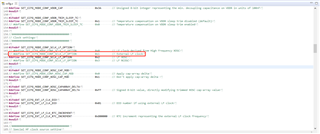Other Parts Discussed in Thread: BLE-STACK
Hi,
Currently in my project I use the LF external 32kHz crystal for handling the low power mode and also RTC.
Now I'm plannng to remove the external 32kHz crystal and use internal LF RC_OSC instead of that. I have changed the configurations for the same and it works fine without external crystal.
But I face some issue,quiescent current goes up from 10-15 µA to 1.8 mA, which is not much more high. How to reduce this?
Also now I would like to know how can I disable the 32 kHz crystal driver ?






